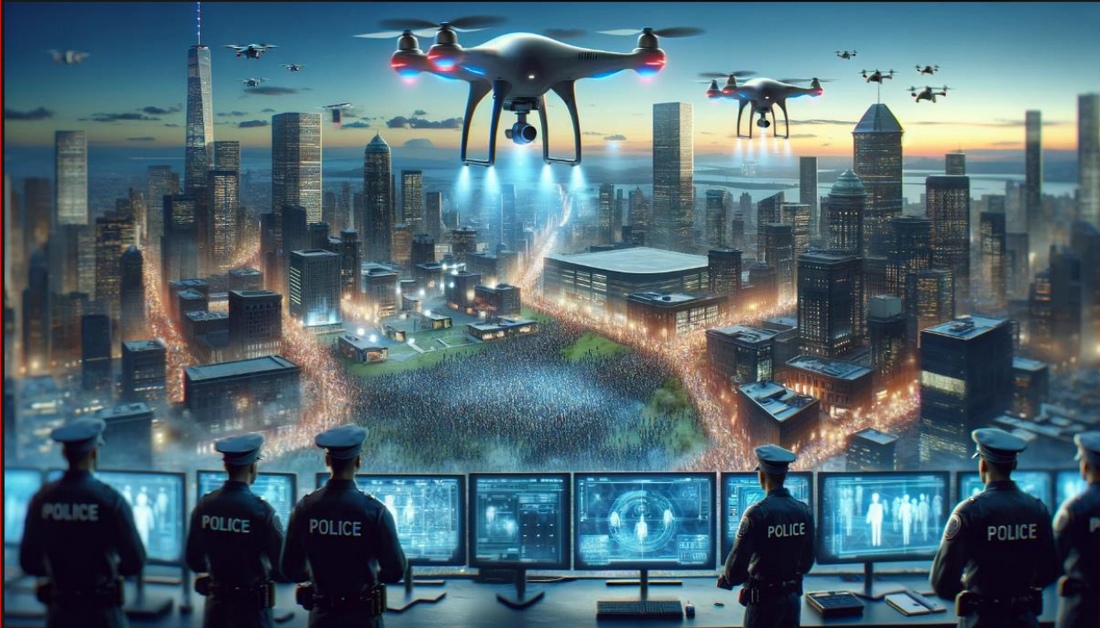
In today's age of advancements, the fusion of drones with facial recognition technology stands out as a significant stride in bolstering public safety and security measures. We would like to share our initial experience from our initiative in Bogotá, Colombia.
We worked with drone integrators to explore the potential of employing drones equipped with facial recognition capabilities to swiftly identify troublemakers and effectively uphold public order.
The Progression of Drone Innovation;
Drones have proven their versatility across various industries, ranging from photography to aiding in disaster response endeavors. Yet the evolution of drone technology alongside the integration of intelligence (AI) algorithms has paved the way for applications in security realms. Notably, the incorporation of facial recognition features empowers drones to conduct real-time identification tasks, thereby transforming surveillance practices and law enforcement operations.
Project Overview;
Teaming up with the government, in Bogotá, Security Pro USA initiated a project geared towards harnessing drone technology to bolster public safety amidst civil unrest scenarios. The project aimed at addressing the pressing need to promptly identify and apprehend instigators during rapidly evolving situations, consequently mitigating property losses and safeguarding both civilians and law enforcement personnel.
Key Discoveries and Insights and Factors:
We had to understand the local climate and weather conditions to select the best hardware to provide high-resolution images to capture facial images that can work with the software.
We had to plan how to get the police server access to images of individuals' facial features and scan them into the database.
One feature we discussed is adding more personal data to the algorithm such as a person's height, weight, width, and walking patterns (collecting this information will take time and is reserved for a very specific target)
Testing the system:
Real-time Identification:
Authorities were able to conduct small-scale tests and identify individuals participating in activities by equipping drones with facial recognition technology. By capturing images and cross-referencing facial features with a database of known offenders, the drones provided law enforcement with information to deploy resources strategically and intervene effectively.
However, the technology is still not developed enough to relay om 100%, and the data quality and the apps still need improvements and testing over time to get a satisfactory 90% + detection score.
Improved Understanding of Situations: Using drones gave law enforcement agencies a perspective of unfolding events, aiding in informed decision-making and resource management. Drones with facial recognition capabilities will allow security personnel to monitor crowds and spot potential troublemakers efficiently.
Privacy Concerns:
While the project showcased the benefits of using drone-based recognition to enhance public safety, it highlighted the need to address privacy issues and follow guidelines. Clear data collection, storage, and usage policies were crucial to safeguard rights and uphold trust when applying such technologies.
Challenges in Operations: Despite its outcomes, the project faced hurdles like adverse weather conditions and limited drone battery life. Additionally, ensuring the accuracy and dependability of facial recognition algorithms across lighting conditions required continuous adjustments. Face angles required optimal performance.
On the more functional side, drones can ID vehicle license plates with much better results than human faces. As technology and hardware improve, we do see a drone capable of locking on a human facial features and or body signature and following them in open and indoor environments.
AI will accelerate the use of this technology in the very near future because it can process data much faster and deploy machine learning and predictive models that can help identify images, thus effectively facilitating public safety and police work tasks.

0 comments